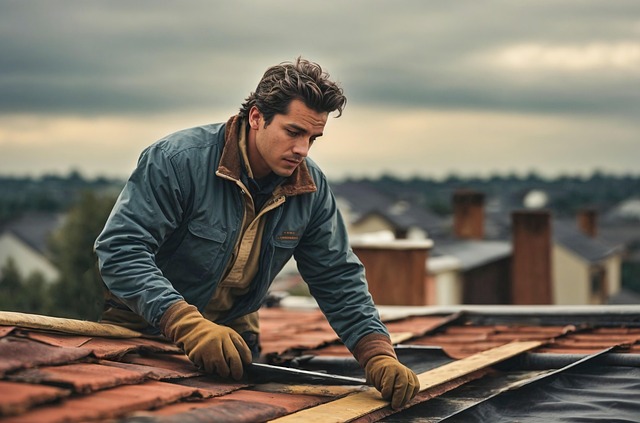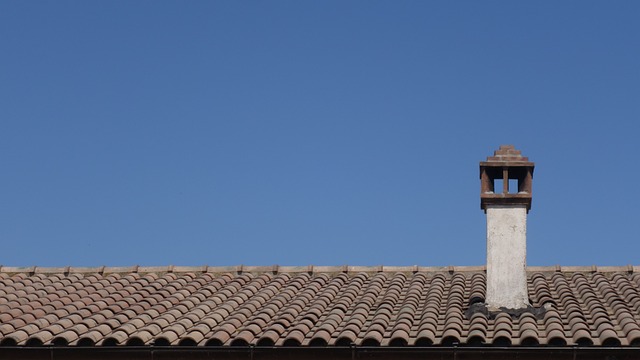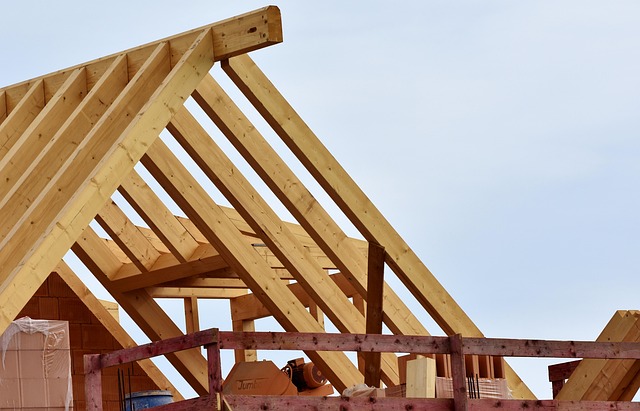This text offers a comprehensive guide to repairing roofs effectively. It emphasizes immediate attention to damage caused by extreme weather, focusing on issues like missing shingles, leaks, and structural weaknesses. The process starts with a thorough inspection to identify both visible and hidden problems, determining the scope of DIY or professional repair. Choosing the right materials—water-resistant, UV-protective products—is vital for long-lasting repairs. Regular maintenance, including annual inspections and preventive measures like gutter cleaning, extends roof life. Budgeting is crucial, considering quote comparisons and potential future savings. The ultimate goal is to ensure a protected home from the elements through proper roof care and repair.
Roof damage is a common issue, but quick action with effective roof patch solutions can prevent further problems. This comprehensive guide addresses all your roof repair needs, from understanding common causes and types of damage to choosing the right materials and mastering patching techniques. We’ll also share tips for maintaining your roof and budgeting for repairs. By following these expert tips, you’ll ensure a durable, long-lasting fix for your home’s most crucial protection—the roof.
Understanding Common Roof Damage: Causes and Types

Roof damage is a common issue that requires prompt attention to prevent further complications. Understanding the causes and types of roof damage is crucial when it comes to effective roof repair. Some of the most prevalent causes include extreme weather conditions such as heavy rainfall, strong winds, hailstorms, and snow accumulation. These events can lead to various forms of damage like missing or damaged shingles, leaks, punctures, or structural weaknesses.
The types of roof damage are diverse. Shingle damage, for instance, is often visible in the form of cracked, curled, or missing shingles. Leaks can occur due to flashing issues, damaged gutters, or weak spots in the roofing material. More severe cases may involve structural problems like warped decking or weakened trusses caused by prolonged water penetration or insect infestations. Identifying the specific type of damage is essential for selecting the right roof patch solution.
Assessing the Scope of Your Roof Patch Project

Before diving into a roof patch project, it’s crucial to assess the scope of the repair needed. Start by inspecting your roof for damage – missing or damaged shingles, leaks, and loose flashing are common indicators. Take note of the extent of the damage, considering both visible issues and potential hidden problems like rot or weakened structural elements. This thorough evaluation will help you determine whether it’s a small, manageable DIY project or a more complex situation requiring professional roof repair services.
Understanding the scope allows for accurate material estimation and budgeting. Minor patches may only require a few supplies, while larger repairs could entail replacing significant portions of the roofing material. By assessing the needs upfront, you can plan accordingly, ensuring your roof patch solutions are both effective and cost-efficient.
Choosing the Right Materials for Long-Lasting Repairs

When undertaking roof patch solutions, selecting the appropriate materials is paramount for long-lasting repairs. It’s not just about finding a quick fix; the goal is to ensure the repaired area stands up to the elements and prevents further damage. Look for materials that are specifically designed for roof repair, offering resistance to water, UV rays, and extreme temperatures. Quality products often incorporate reflective properties, helping to regulate roof temperature and reduce energy costs.
Consider factors like durability, compatibility with existing materials, and ease of installation. Remember, a robust patch isn’t just about temporary coverage; it’s an investment in the longevity of your roof. Using the right materials can mean the difference between a quick fix that needs repeating and a repair that offers genuine, long-term relief for your roofing concerns, ultimately saving you time and money in the long run.
Step-by-Step Guide to Effective Roof Patching Techniques

Roof patching is a crucial skill for any homeowner or roofing professional, as it’s an effective way to extend the life of your roof and prevent further damage caused by leaks. Here’s a step-by-step guide on how to patch a roof efficiently.
1. Inspect and Assess the Damage: Start by thoroughly examining the affected area. Identify the size and extent of the damaged portion, whether it’s a missing shingle, a small crack, or a larger tear. Take note of any underlying issues like rot or water intrusion.
2. Gather Materials: Collect all necessary tools and materials for the repair. This typically includes roofing patch material (asphalt patches, fleece backer, or self-adhesive membranes), a trowel for applying adhesive, a roller or brush for spreading, and new shingles or flashing to match your roof’s color and style.
3. Prepare the Surface: Clean the damaged area, ensuring it’s free from debris, dirt, and loose particles. If there is any rot or damaged underlayment, remove it completely. This step ensures a solid base for your patch, promoting long-term durability.
4. Apply Adhesive: Following manufacturer instructions, evenly spread the chosen adhesive over the prepared surface. For smaller patches, a trowel works well, while larger areas might require a roller or brush. Ensure adequate coverage to create a strong bond.
5. Place the Patch: Position the roof patch material over the damaged spot, pressing it firmly into the adhesive. Adjust as needed for a smooth fit. For edges, use a tool to ensure proper sealing and adherence.
6. Smooth and Trim: Utilize a dry brush or cloth to gently blend the patch with the surrounding roof surface. Remove any excess adhesive and trim the patch’s edges for a clean finish.
Tips for Preventing Future Roof Damage and Maintenance

Regular maintenance is key to preventing future roof damage. Start by inspecting your roof at least twice a year, especially after severe weather events like storms or heavy snowfall. Look for any loose or damaged shingles, flashing issues, or signs of water intrusion. Early detection of these problems can save you from costly repairs down the line.
Implement some simple preventive measures to fortify your roof. Ensure proper drainage by keeping gutters clean and clear of debris, allowing rainwater to flow smoothly off your roof. Consider applying a coating or sealingant to protect the roof surface from UV damage and extreme temperatures. Regular cleaning and sealing of your roof can significantly extend its lifespan, making it more resistant to leaks and other issues that require frequent roof repair.
Cost Considerations: Budgeting for Roof Patch Solutions

When considering roof patch solutions, budgeting is a key aspect that cannot be overlooked. The cost of roof repairs can vary widely depending on several factors such as the size and complexity of the damage, the type of materials used for patching, and whether there are underlying issues that need addressing. It’s important to obtain quotes from reputable roofing contractors to get a clear understanding of the financial commitment involved.
In terms of budgeting, homeowners should account for both the immediate costs and potential long-term savings. While initial expenses may include labor and materials for the patch, neglecting roof repair can lead to more severe damage down the line, resulting in higher replacement costs. Proper roof maintenance not only extends the lifespan of your roofing system but also prevents costly surprises and ensures your home remains protected from the elements.
